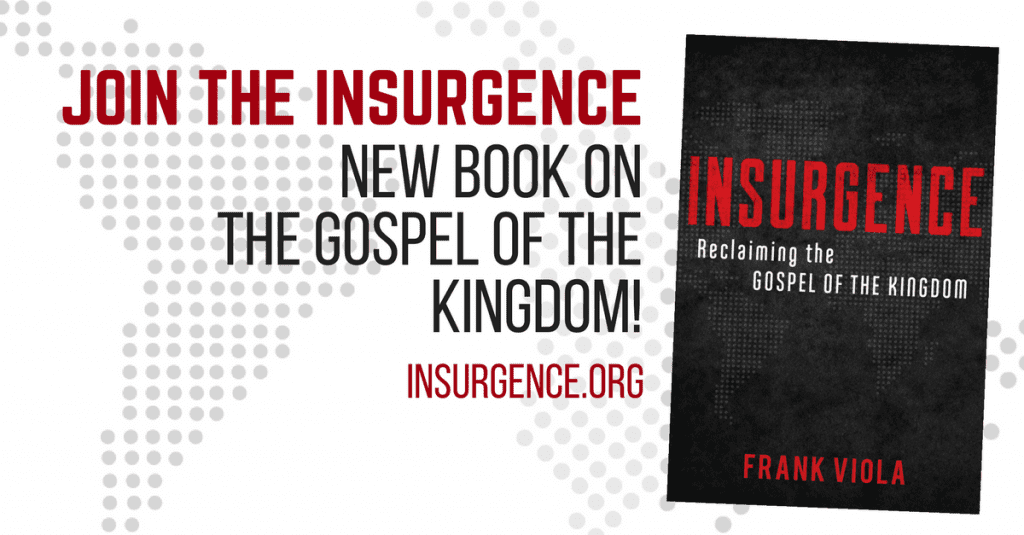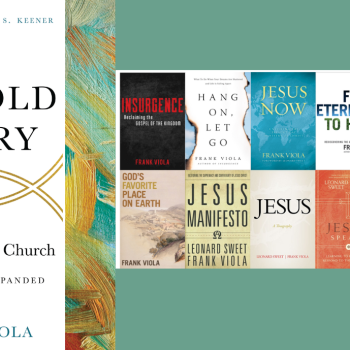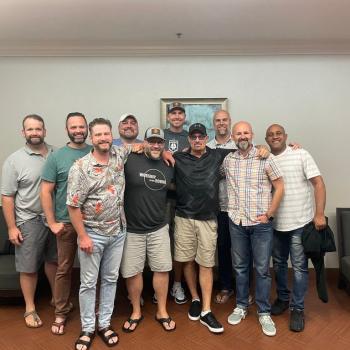Bryan Bishop has written an interesting book entitled Boundless. It’s a book that explores global missions and church expressions.
I caught up with Bryan to discuss his book.
Enjoy the interview.

Instead of asking, “what is your book about,” I’m going to ask the question that’s behind that question. And that unspoken question is, “how are readers going to benefit from reading your book?”
Bryan Bishop: In my 20 years as a mission researcher, I’ve had the opportunity to witness believers in Jesus around the world following the Bible in their own cultural ways, sometimes in ways so different from ours that they might make us uncomfortable. Eventually, I realized I was seeing four biblical principles that could help believers even in America, Europe and the Christianized parts of the world go deeper in their relationship with God. These principles can also help youth in the West who have drifted away from faith find a doorway back to Jesus. I think readers will also find new hope that the changes they long to see in the world can really happen.
Why did you title it Boundless?
Bryan Bishop: God’s creativity is limitless, the possibilities for how to follow Him are endless, and right now His creative work is bursting out all over the world. It’s mostly happening in places most people haven’t heard of, places that have even been kept secret until now. It was my privilege to witness what’s happening and tell some of the stories in Boundless. I hope people will find themselves liberated and inspired by reading it.
Describe an expression of the Christian faith among former Muslims that is completely different from the typical American church.
Bryan Bishop: The differences I saw were subtle, at least on the surface. One setting I witnessed was a Muslim-style gathering, called a jamaat, in a kitchen in Bangladesh. The men and boys sat on the floor where the kitchen table had been. The women and girls watched through the doorway of an adjoining bedroom. The men prayed with their eyes open, holding their hands out in front of them, palms up. They listened to a story from the Bible, about Paul being blind and then seeing. The man leading the group said, “Isn’t that the same for us? We were blind and now we see.”
I didn’t see the members of this group bowing in prayer with their faces to the ground, but I know some groups of Muslim-background believers in Jesus do this. If Christ-followers have never prayed using this bowing method, I recommend trying it. There’s evidence to suggest that Muhammad witnessed this style of prayer among Jews and Christians of his day, and we see Daniel using it in the Old Testament. Still today Coptic Christians use bowing in a form of prayer called Agpia. I’ve adapted this prayer form in a slideshow that groups can use if they want to try it. You can find the slideshow here (scroll down to the audio-visual section, Session Three): http://bryanbishop.net/boundless/boundless-jesus-bible-study/.
Describe an expression of the Christian faith among former Hindus that is completely different from the typical American church.
Bryan Bishop: I saw fascinating new customs and formats among the believers in Jesus I met in India. They called themselves Yeshu Bhaktas. This means Hindus who follow only Jesus. They believed in only one God, who through Yeshu saved them from their sins. They worshiped and followed Jesus alone, but they did it in a Hindu style, allowing the Bible to come to life in their own cultural tradition.
One of the changes that impacted me the most was the different way they obeyed the Bible’s instructions about baptism. They didn’t use the word “baptism” but instead referred to the practice as “jal sanskar,” which means “water ceremony.” The believer who wanted to go through jal sanskar would go down to the Ganges river just before sunrise, taking with him a mentor and maybe some other friends. He and the mentor would wade into the water up to their waists along with the other Hindus doing their morning worship. They would stand next to each other facing the rising sun. Then the disciple would drop straight down under the water and come up again without the mentor touching him.
The mentor would then whisper in the disciple’s ear the “guru mantra,” the words the disciple was to remember from this day forward. This was a Bible verse specially picked by the mentor for the disciple.
It wasn’t appropriate for me to attend this baptism, but I met the young man who was baptized and interviewed the mentor, and after the baptism they showed me pictures of the moment. I saw a wet, beaming boy with a garland of marigolds around his neck, illuminated by the rising sun.
The striking thing about this picture is to compare it with the typical image of baptism among Indian Christians. A male pastor takes a female in his arms—normally a huge no-no in India, where men and women don’t touch in public—and dips her under the water, clutching her wet body as she comes up. This would be a shocking image to Indian Hindus, and would symbolize the whole foreignness of Jesus-worship. By contrast, the jal sanskar looks exactly like Hindu worship in the water. Yet, I think the method is just as true to what we see commanded in the New Testament.
Describe an expression of the Christian faith among former Buddhists that is completely different from the typical American church.
Bryan Bishop: In my research for the book Boundless, I came across the account of the Religion of Light, an ancient expression of biblical faith in China that grew out of Buddhist and Taoist culture. One of the changes that I think believers in Jesus can make to communicate better to our world is to come up with language that better expresses what we mean. I think concepts like “conversion” or “evangelism” or even “inviting Jesus into your heart” don’t mean what we think they mean to many of our unchurched listeners. Do we even know what we mean when we say these words?
In the Religion of Light, the leaders tried hard to use Buddhist imagery and language to express biblical truths. Here is one example: “God suffered terrible woes so that all should be freed from karma, for nobody is beyond the reach of the Buddha principle.”
In Boundless, I have a section about language and how we can find new words, and I also have a section about truth, because I believe that if we approach people of other faiths with respect, we can learn from them and in that learning we can grow in our own faith and we can find language to express ourselves that communicates more clearly what we really mean.
Why do you think so many pastors in the West are allergic to the idea of changing their church services beyond minor tweaks to the Protestant order of worship?
Bryan Bishop: There are probably a lot of reasons for this, but the reason that comes first to my mind is, they stick with what they know because that’s all they know.
Up until now, Christ-followers have only known one format for their faith. It’s the format that grew up in Rome, spread into Europe and then came over to America and from there was exported around the world. If you go to Christian churches in Asia or Africa today, you often encounter a version of Christianity that reminds you of what we used to have in America in the 1950s. Sure there are some cultural variations, but not a lot. As an example, in most Christian churches around the world, worshippers keep their shoes on, even though in most Muslim, Buddhist or Hindu cultures, people would take their shoes off when entering a spiritual place. With the best of intentions, a European model of faith has been exported to the word. As a result, when we see young people in the West leaving the church in droves (one-third now say they are religiously unaffiliated), Christians don’t have many new ideas to draw from. We tend to do more of the same: louder music, cooler sneakers on the pastors. We don’t really know how to think outside our box.
That’s why I think the new ways people are following Jesus from Muslim, Hindu, Buddhist, or Native American backgrounds are so important. We not only see new ideas for where to meet or what to do when we meet, but we see principles that can help us break through the boundaries in our own thinking.
When a pastor finishes your book, what would like them to think and do?
Bryan Bishop: I hope pastors will feel affirmed that their Western cultural expression of faith in Jesus is valuable and significant and necessary. And I also hope they will get together with other believers to dream about how to spin off other kinds of fellowships that meet the needs of subcultures in their communities that aren’t attracted to typical Christian culture. The book will give them four principles and lots of examples to inspire them. I’ve also created a Bible study at the end that will create a unique format for this dreaming and exploring, so I hope pastors will encourage their congregations to try the study and see what happens.
When a Christian who is not in a church leadership role finishes your book, what would like them to think and do?
Bryan Bishop: I recommend they first spend some time in prayer. I suggest they take off their shoes before praying as a symbol of their willingness to take off the European cultural wrappings that have surrounded their Christian faith experience and pray for themselves and for the people they love who have drifted away from the church.
I suggest they try something completely different culturally as a way to open their eyes. I recommend going to a powwow (they are held all over North America), visiting a mosque or a temple, trying Christ-centered yoga, or going to a Christian church that is completely racially different from their own.
Then I recommend that they spend some time with the unchurched people they love in the environments those people enjoy. Use the principles in my book to imagine what Jesus-centered faith could look like in this context. Pray for God to bring this kind of gathering to life.
Those are the kinds of dreams and prayers I hope readers will come away with. I’m looking forward to seeing what happens as a result.













